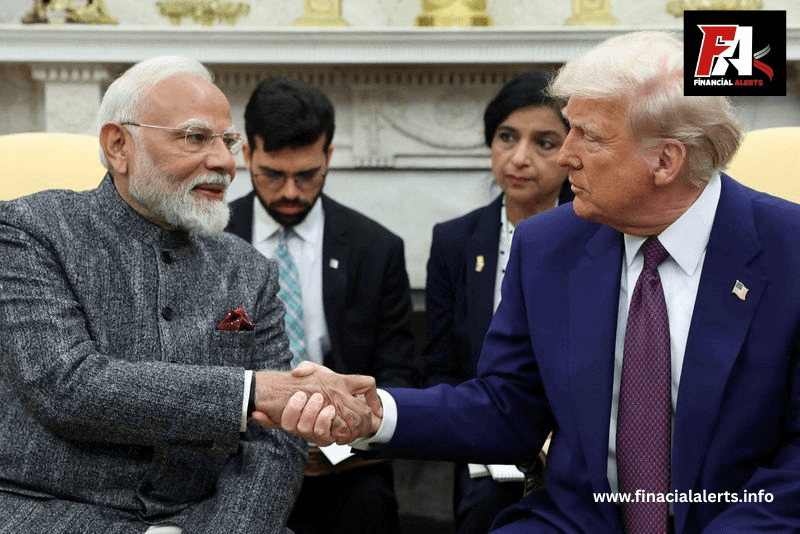India is facing a pivotal moment in its global trade narrative. With the United States recently announcing 25% tariffs on certain Indian goods—ranging from steel to chemicals—what initially appeared to be a diplomatic trade friction has turned into a much-needed wake-up call for India to re-evaluate its position in the global supply chain.
This isn’t just about tariffs. It’s about India’s trade sovereignty—the ability to maintain fair, self-reliant, and strategic control over imports, exports, and key economic sectors without overdependence on a few powerful global players.
Why the 25% Tariff Matters
The US decision to impose these tariffs was largely in response to what it considers imbalanced trade practices and India’s protectionist policies. Although these duties affect a relatively small portion of India’s total exports to the US, the symbolic impact is large. It signals a growing impatience among developed nations with what they see as emerging markets protecting their domestic industries at the cost of global fairness.
But instead of reacting with retaliation or denial, India needs to see this as a call to strategically rethink its trade dependencies, manufacturing capabilities, and global alliances.
The Global Trade Tensions Are Real
Over the last decade, global trade has increasingly become weaponized. Countries are using tariffs and sanctions as strategic tools to influence geopolitical behavior. The US-China trade war, EU’s digital tax policies, and now the US-India tariff friction reflect this trend.
India is not immune to these pressures. As a developing economy striving to become a $5 trillion economy, India must balance its growth ambitions with resilient trade practices.
A Closer Look at India’s Trade Vulnerabilities
India has often been caught between import dependence and export underperformance. Here’s where the vulnerabilities lie:
- Heavy reliance on crude oil, electronics, and machinery imports
- Low share in global exports, especially in high-value products
- Slow progress on trade agreements compared to nations like Vietnam or Mexico
- Overdependence on a few markets like the US and EU for high-ticket exports
In such a scenario, any external disruption—like a 25% tariff—can ripple through the economy, affecting jobs, manufacturing, and forex stability.
Self-Reliance Is Not Isolation
The “Atmanirbhar Bharat” (Self-Reliant India) mission was launched with the idea of reducing dependence on imports, boosting local manufacturing, and enhancing global competitiveness. But self-reliance does not mean closing borders. Instead, it should focus on:
- Building domestic capabilities in critical sectors like semiconductors, defense, pharma, and electronics
- Incentivizing R&D and innovation to move up the value chain
- Making Indian exports more competitive via logistics reform, quality standards, and trade promotion
- Revisiting trade deals with ASEAN, EU, and others with fresh strategies
Time to Diversify Trade Partners and Products
India must look beyond traditional trade routes. Africa, Latin America, Southeast Asia, and Middle Eastern economies offer untapped export opportunities in engineering goods, IT services, green tech, and pharmaceuticals.
Also, India needs to diversify its export basket. Currently, the country relies heavily on a few sectors like textiles, gems and jewelry, and IT services. It’s time to add more value-added, technology-driven exports like electric vehicles, drones, clean energy equipment, and specialty chemicals.
Policy Shifts Must Be Bold and Timely
The government must treat this 25% tariff as a trigger for bold trade reforms, not just a temporary diplomatic challenge. Some key moves could include:
- Fast-tracking Free Trade Agreements (FTAs) with key partners
- Increasing support for MSMEs to enter global markets
- Upgrading port infrastructure and simplifying customs processes
- Strengthening domestic IP rights to attract tech-based investments
Conclusion: From Wake-Up Call to Action Plan
The 25% tariff is more than just a tax—it’s a signal that India must rethink its trade playbook. Instead of reacting with knee-jerk policies or nationalistic rhetoric, the country should embrace this as a chance to correct structural inefficiencies, embrace competitive globalization, and strengthen its trade resilience.
India’s sovereignty in trade doesn’t lie in protectionism—it lies in preparation, innovation, and diversification. If India gets its strategy right, this could mark the beginning of a more independent and influential position in the global trade order.

I am a digital marketing executive as well as content writer in the stock market and crypto related blogs. My goal is to provide simple, interesting and reliable information to readers through my articles so that they always stay updated with the world of stock market and crypto.




f7v3lb
Yo, Lodi777login is the real deal! Been playing here for a bit and the payouts are quick. Definitely worth checking out! Click here to get started: lodi777login